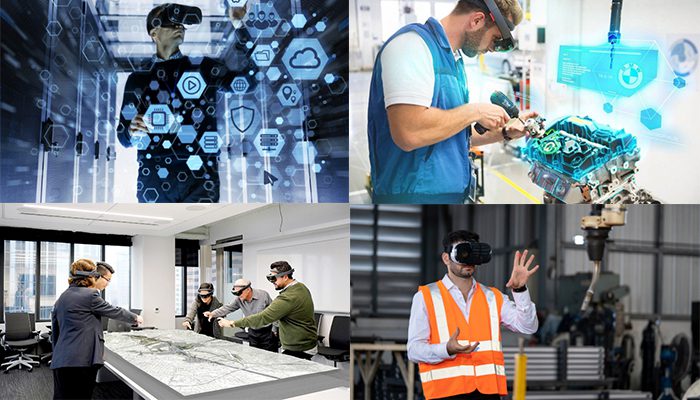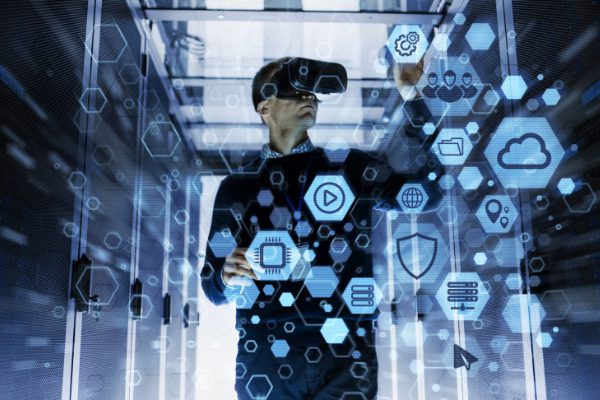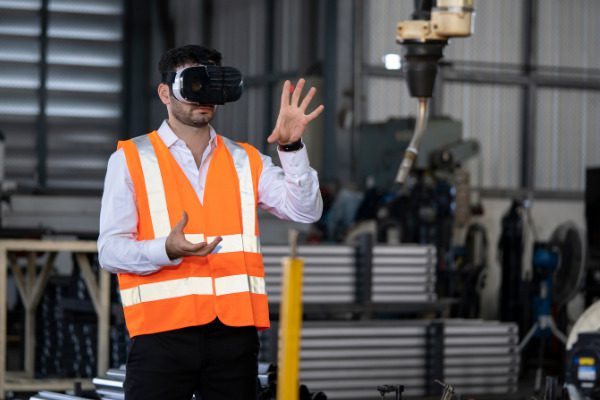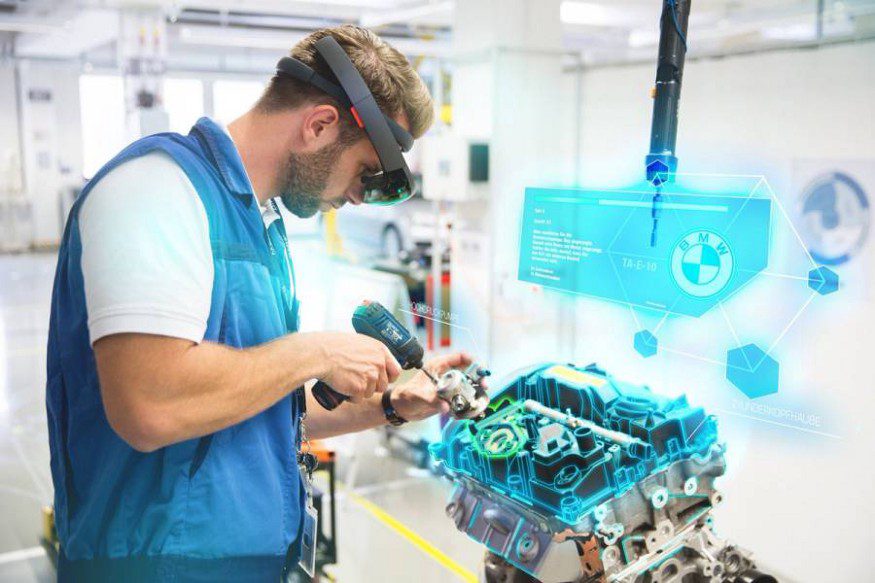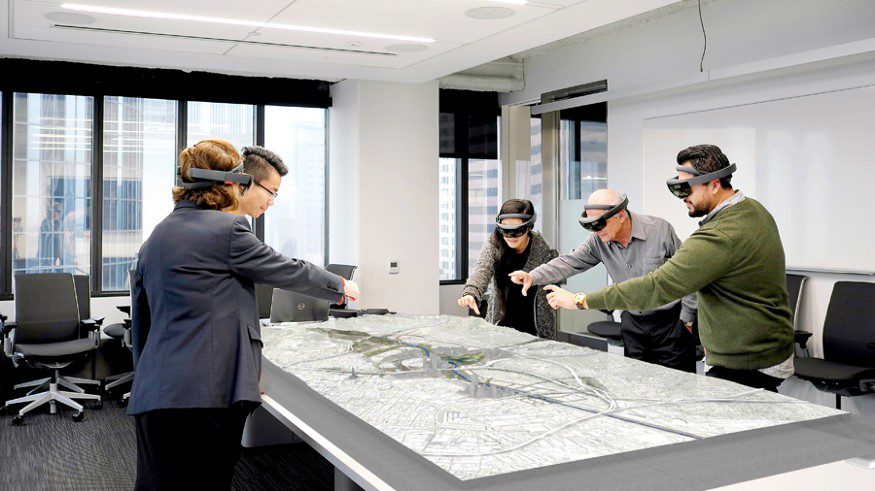Augmented reality and virtual reality are often misused and thrown around quite loosely, but they are two different concepts.
Let us first explain the difference between AR vs. VR
Augmented Reality (AR)
AR is an interactive experience that overlays digitally created objects and information over a real-world environment.
Virtual Reality (VR)
VR is similar to an alternate universe, where sounds and objects immerse the user in an artificial 3D environment.
VR Example
Virtual reality headsets like the Quest 2 from Oculus and HTC from Vive use OLED panels that fill your field of vision, blocking out all real-world surroundings to produce this immersive effect.
AR Example
Augmented reality headsets such as the Microsoft Hololens 2 feature transparent holographic lenses that allow users to see the real world with added digital objects, images or data projected over their surroundings.
Use Cases of AR / VR in Business
- Architecture, Construction, Industrial Design
- Education/Training Solutions
- Interior Design
- Ecommerce and Retail
The applications of augmented and virtual reality are ever-growing. As technology advances, a trustworthy and reputable AR/VR company can develop solutions that meet and exceed the needs of any enterprise or organization.
(1) AR/VR In Architecture, Construction, Industrial Design
AR Use Cases
Augmented reality can significantly improve the creative and technical process when designing a building, HVAC system, or creating a product or model. AR allows the design team to visualize rendered versions of their models on-site or anywhere before being built, enabling the team to make changes and catch errors earlier in the overall process.
VR Use Cases
Before renting or buying a home, it is essential to experience the space. Virtual reality can allow users to visit different spaces remotely without leaving the comfort of their couch. By providing users with a digital version of the home, engineers/designers can digitally step in or around their models. In addition, virtual reality offers the whole experience for potential clients to view the home/design before it is built. VizReality by VizworX is an excellent example of how Virtual reality can enhance the consumer experience in Real Estate.
(2) AR/VR in Education & Training Solutions
AR Solutions
From complex surgeries to manufacturing, AR holds the potential to boost the depth and effectiveness of training in many different industries. For example, AR is becoming very popular for repairing and maintaining complex equipment. Whether a car engine or industrial machinery, maintenance professionals can use augmented reality headsets/glasses to provide helpful information about their work in real-time. Augmented reality can direct repairs with step-by-step instructions or provide beneficial tips while the restoration is done.
VR Solutions
Virtual reality transports learners into an immersive digital environment of sight and sound, allowing training to be done on-site without operating complex or dangerous equipment. It provides the ability to simulate real-world scenarios, visualize abstract and complex concepts, and practice in a safe environment.
(3) AR/VR in Interior Design
AR in Interior Design
Augmented reality in interior design is instrumental as AR can allow users to engage with designs in a real-world environment visually. For example, an AR headset or a mobile phone app would allow the designer to stand in an empty room, change the colors of the walls, place furniture or adjust the lighting. In addition, AR allows the designer and the client to share how everything would be and how it feels before purchasing anything.
VR in Interior Design
In contrast, virtual reality would bring you to an entirely virtual version of the room, allowing you to move or edit anything in the space. This virtual space provides a virtual version of the room but lacks the real-life component found in augmented reality.
AR/VR in Commercial Products (Online Shopping & Retail)
AR in Ecommerce
Augmented reality in e-commerce and retail can allow customers to have an interactive experience with products on the shelves. For example, with augmented reality glasses or even a mobile phone, customers could see digital projections of special offers, prices, materials, ingredients or a digital version of the product they are holding or looking at in real life.
VR in Ecommerce
Virtual reality apps in e-commerce and retail can do similar things in a digital viewport. For example, if a product is unavailable, unreleased or only sold online, virtual reality would allow the consumer to step into a virtual viewing room and interact with a fully digital 3D version of the product on a model, in-action or whatever the use case may be.
Unique VR/AR Solutions For Your Business
The applications are endless. Virtual and augmented reality can add exceptional value to your business. With the only limit being your imagination, customizing applications to satisfy your business and potential customers’ needs is what we specialize in at VizworX.
The design team at AECOM shown here is observing a project in AR with the Microsoft Hololens.
We have managed and customized virtual and augmented reality solutions for our clients that have attained and surpassed their desired results. Our dedicated team at VizworX is readily available to answer any questions you may have — contact VizworX for custom software solutions today.

